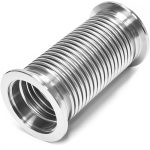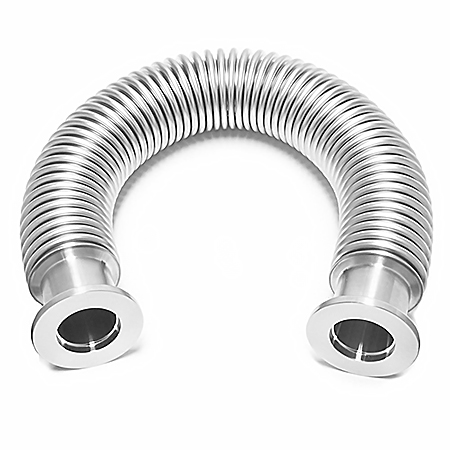
Manufacturing Process of Stainless Steel Bellows
The manufacturing process of stainless steel bellows is relatively complicated, including four parts: heat treatment, surface treatment, shaping process and stable treatment process.
Heat treatment of stainless steel bellows hose
For stainless steel bellows to have good elastic properties, heat treatment is an indispensable process. The heat treatment of the bellows can eliminate work hardening during the manufacturing process, restore the plasticity of the stainless steel bellows, and at the same time strengthen the material and obtain elasticity.
Bellows has its quality requirements both inside and outside the heat treatment. The internal requirement is that after heat treatment, the product can obtain a certain organizational state, grain size and mechanical properties; the external quality is mainly the degree of surface oxidation after heat treatment.
Part 2: Surface treatment of stainless steel bellows
The process mainly includes degreasing, loosening oxide scale and pickling, etc. to make the surface of stainless steel bellows smooth.
Part III: Reshaping process of stainless steel bellows
After the bellows are formed, because of the elastic rebound, the wave pitch and wave pattern of the bellows are different from the requirements of the absorption meter, so they must be shaped.
For stainless steel bellows made of work hardened materials, generalists use manual and mechanical shaping methods. For the stainless steel bellows made of dispersion hardened material, the bellows are shaped by putting them into the aging fixture, and finally the shaping effect is achieved.
Part IV: Stable treatment process of stainless steel bellows
The bellows will generate internal stress during processing, making the product elastic and geometrically unstable. The purpose of the stabilization process is to eliminate stress, stability and geometry. The stabilization treatment of bellows includes thermal stabilization treatment process and mechanical stabilization treatment process. Under normal circumstances, only heat stabilization treatment, mechanical stabilization treatment when there are special requirements.
Widely used in steel, cement, chemical industry, power plant, road construction, metallurgy, food processing, etc.






